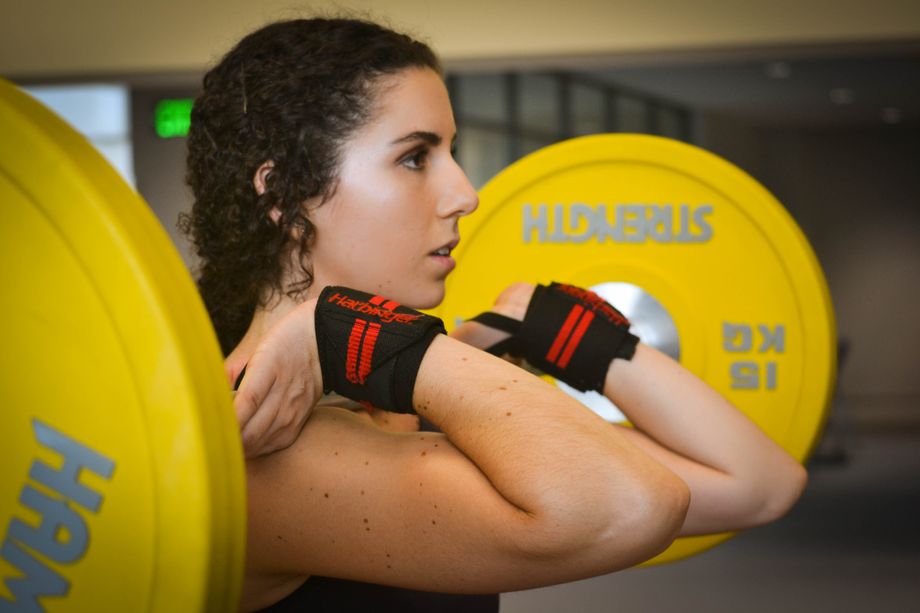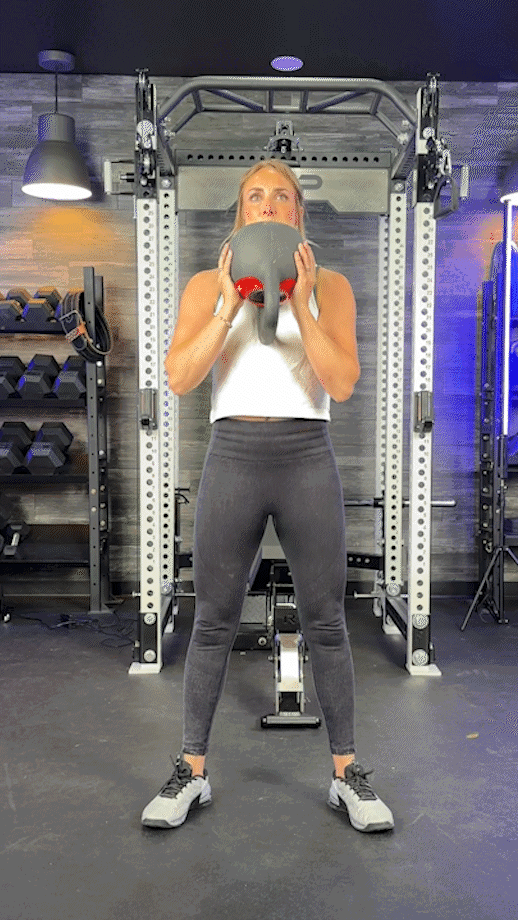We test and review fitness products based on an independent, multi-point methodology. If you use our links to purchase something, we may earn a commission. Read our disclosures.
Weight training is the scientifically proven best way to get stronger and build your dream physique (among other benefits), yet women who are new to fitness tend to shy away. This doesn’t come as a surprise to us when most weight rooms are filled with massive people tossing fully loaded barbells around.
However, we’re ecstatic to see more and more women pick up strength training as their exercise of choice. If you’re still on the edge, this weight training for women guide will help you better understand the benefits, exercise ideas, free workouts, and how to get started on your weight training journey.
Key Takeaways
- Women can weight train the same way men can1, as the physiological characteristics of muscle in the sexes are the same.
- Women should take precautions or modifications when strength training while pregnant or postpartum.
- Strength training twice a week improves bone density and strength2 in postmenopausal women with osteoporosis and low bone mass.
- Weightlifting can improve the physical and mental health of women.
What Is Weight Training?
Weight training is any exercise that involves the use of external weights, or resistance, to strengthen the muscles. You can do weight training with free weights like dumbbells, kettlebells, a barbell and weight plates, or odd objects like sandbags and tires. Wearing a weighted vest is also a form of weight training.
Some experts group resistance band training into the weight training category, too, since the resistance is external to your body.
Note that weight training isn’t the same as strength training or resistance training, although the terms are often used interchangeably. Strength training and resistance training are synonymous, and they include weight training, but also bodyweight strength exercise, calisthenics (advanced bodyweight training), and plyometrics (explosive bodyweight training).
Is Weight Training Different for Women Than Men?
Women, especially those new to fitness, often wonder if they should be training in a way that’s different from men. The answer is no, but you don’t have to take my word for it.
Take it from one of the most respected and longstanding organizations in strength and conditioning, the National Association of Strength and Conditioning (NSCA):
“There is no sensible reason why resistance training programs need to be different from those of men,” the organization wrote in the book Essentials of Strength and Conditioning1, the official educational text for those pursuing a certification in strength and conditioning.
Why?
Well, because, “the physiological characteristics of muscle in the sexes are the same,” the NSCA wrote.
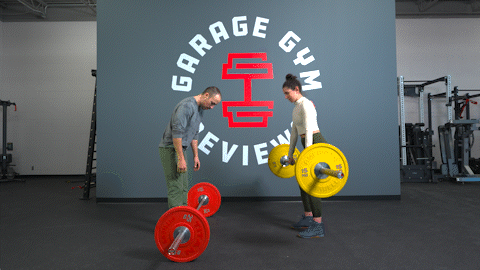
What’s more, the NSCA writes, is “because the muscle groups involved in a particular sport or physical activity are obviously the same for men and women, resistance training programs should be designed to improve the performance of the muscles needed for successful sport performance and everyday activities, regardless of sex.”
RELATED: Best BCAA for women
The only exceptions would be in pre- and postnatal periods of a woman’s life, when she may need to take certain precautions or modify her programming based on a doctor’s recommendations.
Best Weight Training Exercises for Women
Unsure what exercises to begin with? Here is a list of some of the most effective strength exercises for all muscle groups. Don’t worry if you can’t perform some of them right away: There are modifications to make them more accessible. For instance, you can use a pull-up assist band to increase your strength until you can do a pull-up on your own.
Chest Exercises
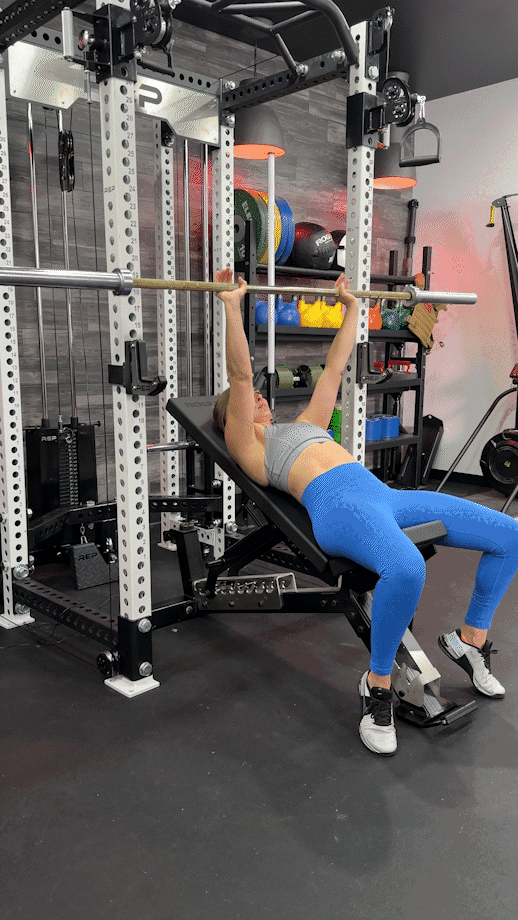
- Bench press
- Dumbbell bench press
- Push-ups
Shoulder Exercises
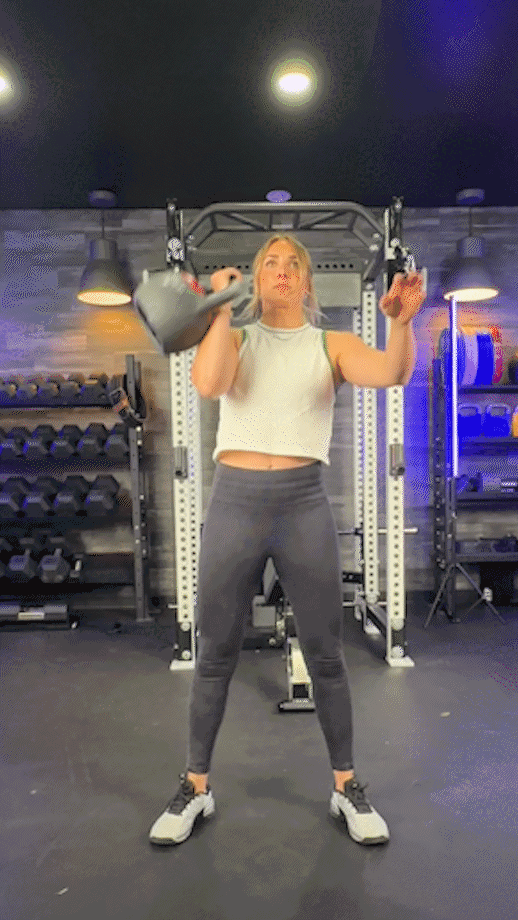
- Standing overhead press
- Kettlebell overhead press
- Lateral raises
Arm Exercises
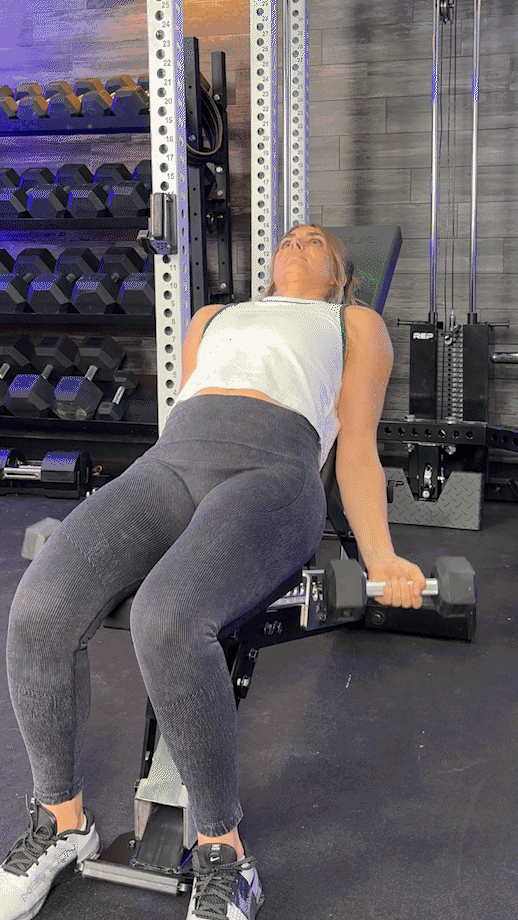
- Biceps curls
- Triceps extensions
Back Exercises

- Pull-ups
- Bent-over rows
- Band pull-aparts
Core Exercises
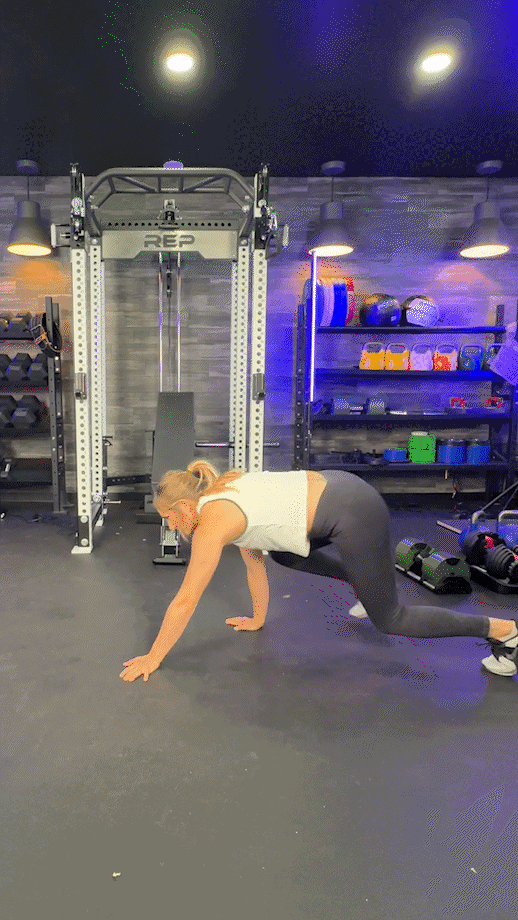
- Planks
- Bear crawls
- Dead bugs
Leg Exercises
Glute Exercises
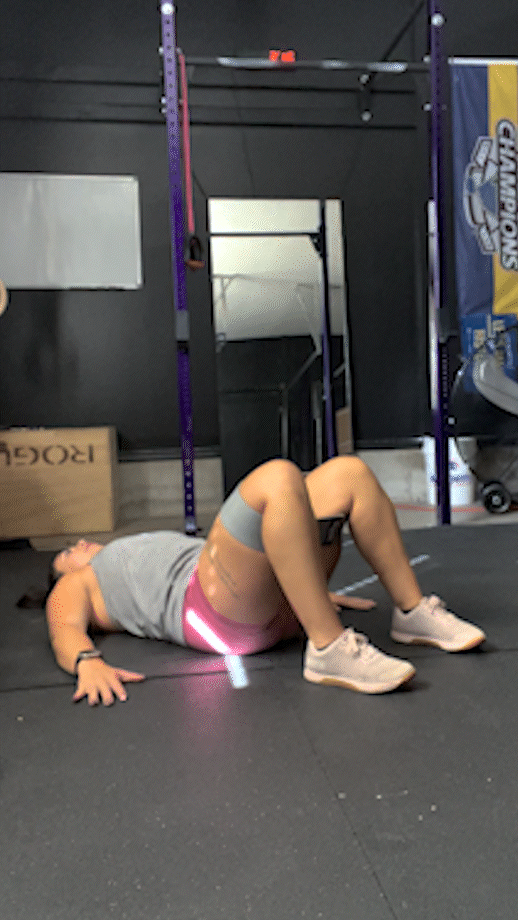
- Glute bridges
- Hip thrusts
- Banded hip abduction
Full-body Weight Training Workout for Women to Try
For this full-body workout, you only need a pair of dumbbells. It’s a series of supersets, which means you’ll perform two exercises in succession and then rest.
Superset 1 (2-3 sets): Goblet squats and bent-over rows
- 12 reps: goblet squats (holding one dumbbell in both hands in front of your chest)
- Followed immediately by 12 reps: bent-over rows
- Rest 1 minute after the rows
Superset 2 (2-3 sets): Suitcase lunges and overhead press
- 12 reps (6 each side): suitcase lunges (holding one dumbbell in each hand by your sides)
- Followed immediately by 12 reps: overhead press (perform while standing)
- Rest 1 minute after the presses
Superset 3 (2-3 sets): Chest press and glute bridges
- 12 reps: dumbbell chest press
- Followed immediately by 12 reps: glute bridges (holding one dumbbell against your hips)
- Rest 1 minute after the bridges
Between each superset, rest 2 to 3 minutes.
Though this is a muscle-building workout, it will certainly fire up your cardiovascular system, too, due to the higher-volume repetitions.
Trainer tip: It may be helpful to have two pairs of dumbbells, one light and one heavier, using the heavier weights for the lower-body exercises.
Bodyweight Strength Training Workout for Women to Try
No weights on hand? No problem. You can build strength without weight lifting. Try this bodyweight strength workout, which also utilizes the superset format.
Superset 1 (2-3 sets): Push-ups and squats
- 5 reps: standard push-ups (or 10 modified push-ups)
- Immediately followed by 10 reps: squat with a 3-second descent and 1-second pause at the bottom
- Rest 45 seconds between sets
Superset 2 (2-3 sets): Planks and lunges
- 30-second plank
- Immediately followed by: 16 reps (8 each leg) reverse lunges with a 1-second pause at the bottom of each rep
- Rest 45 seconds between sets
Superset 3 (2-3 sets): Close-grip push-ups and glute bridge holds
- 5 reps: close-grip push-ups (targeting the triceps) or 10 modified
- Immediately followed by: 30-second glute bridge hold
- Rest 45 seconds between sets
Between each superset, rest 2 to 3 minutes.
This, too, may feel high-intensity like a cardio workout, but make no mistake: it will build muscle in your quads, hamstrings, chest, and more.
Benefits of Weight Lifting for Women
- Increases Muscle Mass and Builds Strength
- Improves Range of Motion
- Increases Bone Density
- Protects Joint Health
- May Improve Sleep Quality
- Supports Mental Health
- Reduces Injury Risk
- Increases Confidence
- Prepares You for Pregnancy
- Supports Weight Loss Goals
- Can Improve Quality of Life
RELATED: Best Workout Shorts for Women
How to Start Weight Training
- Work With a Coach
- Try Group Classes
- Workout From Home
- Choose an Appropriate Weight Training Plan
- Start Simple (and Light)
- Progressively Overload
- Stay Consistent
RELATED: Best Workout App for Women
Common Weight Training Mistakes
Weight training has many complexities, but luckily, most mistakes are avoidable when you’re equipped with the right knowledge. Below, learn about common weight training mistakes and how to avoid them.
- Doing Too Much, Too Fast. Take care not to overdo it in the beginning. Adequately space out your workouts and schedule in rest days to avoid extreme soreness and overuse injuries.
- Lifting Too Heavy. Likewise, make it a point to perfect your weight training technique and form before going too heavy.
- Skipping Rest Days. By ignoring your body’s requests for rest—like intense or prolonged soreness, headaches, or extreme fatigue mentally and physically—you increase your risk for injury and overtraining syndrome.
- Overworking the Same Muscle Groups. Many women have a tendency to overwork their lower bodies and core muscles while neglecting their upper bodies, thanks to societal beauty standards that just don’t go away. It’s important to work all of your muscle groups to ensure an even distribution of strength and to give each group a chance to rest and avoid injury.
Weight Training for Women: Final Thoughts
Weight training is one of the best things a woman can do for her physical and mental health. The benefits are boundless, and truly, there’s no feeling like seeing yourself become stronger and noticing the results play out in day-to-day life.
To recap:
- Weight training is any form of exercise that involves external weight to strengthen the muscles
- Strength training encompasses weight training plus calisthenics, plyometrics, and general bodyweight training
- Women can weight train in the same way that men can
- Women can and will reap many benefits from weight training, including stronger bones and joints, more energy, and improved mood
- Weight training doesn’t have to be complicated; some of the most basic exercises are the most effective
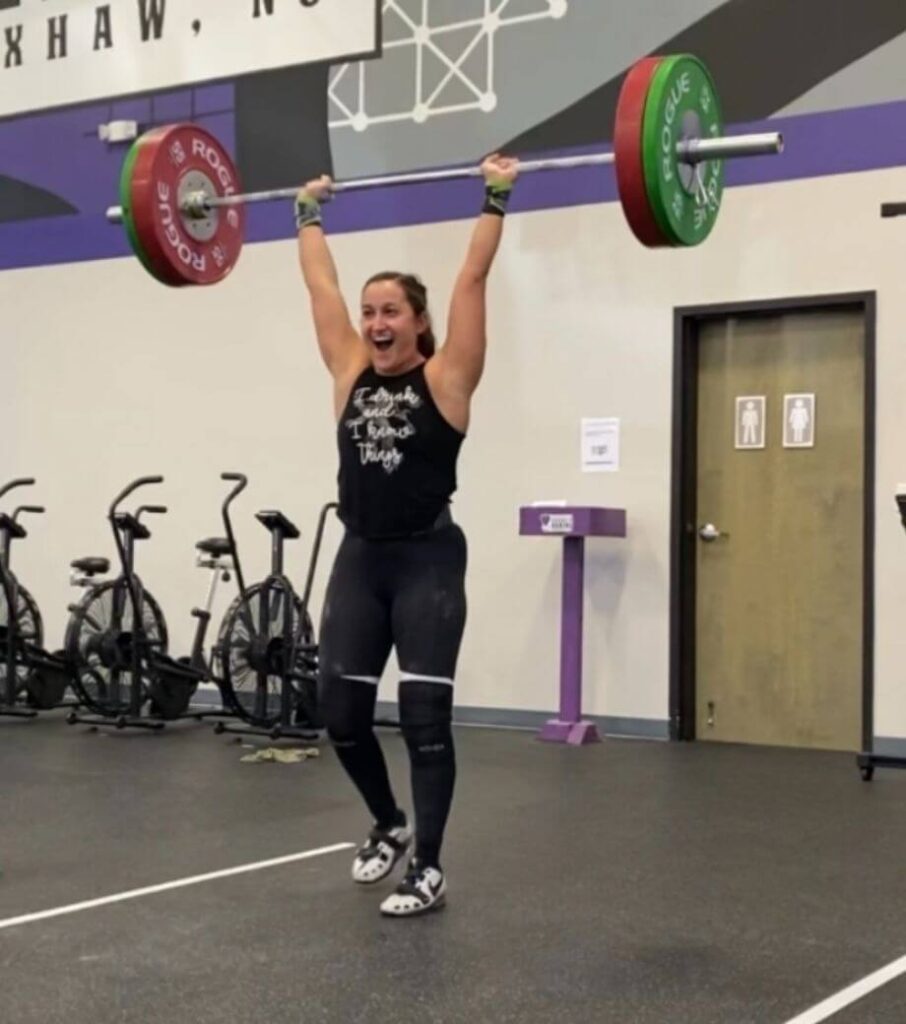
Weight Training for Women: FAQs
Still have questions? We have answers. Here are some final FAQs about weight training for women.
Will weight training make me “bulky”?
No, weight training will not make you “bulky” unless you’re intentionally eating more calories than you burn, prioritizing protein intake, timing carbohydrates, and continually overloading your muscles. It’s very difficult to “bulk up” and it’s definitely not something that happens unintentionally.
RELATED: Best Protein Powder for Women
How many days a week should a woman weight train?
Ideal frequency of training depends a lot on a person’s current fitness level and goals, not to mention schedule. A good place to start is three sessions per week for 30 to 45 minutes each.
What weight training is best for women?
Those who identify as women don’t need to train any differently, as all humans share the same physiology. Pick any type of strength training you enjoy that’s focused on progressive overload over time, and you’ll be able to build strength and muscle over time.
What is the 6-12-25 method for women?
The 6-12-25 method can be used by all individuals of any gender. It’s a method meant to target a variety of goals. You choose a heavy compound exercise and perform it for 6 reps, a moderate compound or isolation exercise performed for 12 reps, and a lighter isolation exercise performed for 25 reps.
Is 30 minutes of weight training a day enough?
Yes. If performed at the right intensity, 30 minutes per day is plenty of time to enjoy the benefits of weightlifting.
What does weightlifting do to a woman’s body?
Weightlifting builds strength and muscle and improves bone density, which can help minimize the risk of developing osteoporosis later in life.
References
- Haff G, Triplett NT. Essentials of Strength Training and Conditioning. 4th ed. (National Strength and Conditioning Association NSCA, ed.). Champaign, US: Human Kinetics; 2021.
- Watson, S. L., Weeks, B. K., Weis, L. J., Harding, A. T., Horan, S. A., & Beck, B. R. (2017). High‐Intensity resistance and impact training improves bone mineral density and physical function in postmenopausal women with osteopenia and osteoporosis: the LIFTMOR randomized controlled trial. Journal of Bone and Mineral Research, 33(2), 211–220. https://doi.org/10.1002/jbmr.3284
Further reading

In this Proform 440R rowing machine review, we look at the features and specifications of this budget-friendly rower. Read more

Protein coffee is a fun and tasty way to increase your protein intake while getting your daily caffeine fix. Here's how to make protein coffee you'll enjoy! Read more

For the month of January, Garage Gym Reviews will be hosting a community-oriented 31-day walking challenge. Read more

In this deep dive of jogging vs running, we'll break down the differences between the two activities, and discuss which one is better for your goals. Read more

